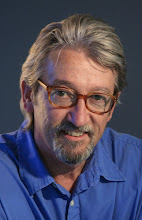 Whenever I go to shoot a wedding I try and check out the location ahead of time. If possible I go in person, if not I look at the venues website, or at times call the venue and ask about picture possibilities at their location. There are times when none of these steps really help and I have to wait until the day of the wedding to find what I will be working with. I get there early and scout out possible sites where we could make some good and creative images. This venue was very low on the location possibilities and I was somewhat disappointed. I did eventually find some areas that could work. I brought the Bride into this dark room that had a full wall of curtains that would work as a nice background. I then pulled back the curtains a bit and all this light came pouring in. I immediately knew this would work for a good image. I asked the Bride to go up to the curtain and push it aside slightly to let in just enough light. The image started coming together, especially with the long shadow it produced. It just reaffirmed to me that if you look at and work your location, you will make an interesting image that will make you and your client happy.
Whenever I go to shoot a wedding I try and check out the location ahead of time. If possible I go in person, if not I look at the venues website, or at times call the venue and ask about picture possibilities at their location. There are times when none of these steps really help and I have to wait until the day of the wedding to find what I will be working with. I get there early and scout out possible sites where we could make some good and creative images. This venue was very low on the location possibilities and I was somewhat disappointed. I did eventually find some areas that could work. I brought the Bride into this dark room that had a full wall of curtains that would work as a nice background. I then pulled back the curtains a bit and all this light came pouring in. I immediately knew this would work for a good image. I asked the Bride to go up to the curtain and push it aside slightly to let in just enough light. The image started coming together, especially with the long shadow it produced. It just reaffirmed to me that if you look at and work your location, you will make an interesting image that will make you and your client happy.Happy Shooting


